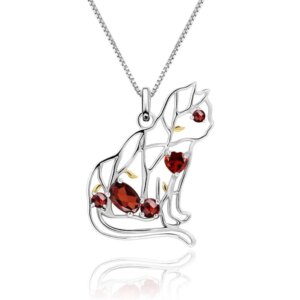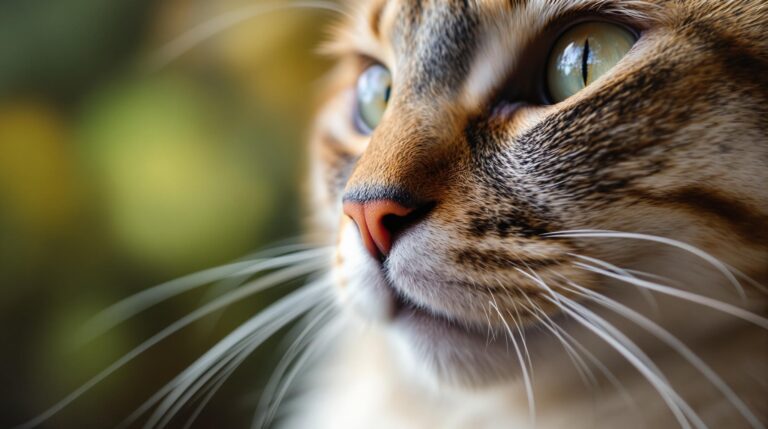Cats hissing at new cat can be a challenging and stressful experience for both the pets and their owners. This article will explore the reasons behind this behavior, provide practical tips for managing it, and highlight the importance of a gradual and positive introduction process. By understanding your cat’s needs and implementing the right strategies, you can create a harmonious multi-cat household. Discover how to reduce hissing and aggression, and ensure a smooth transition for your new feline family member.
Why Cats Hissing at New Cats
Territorial Behavior
Territorial behavior is a common reason why cats hiss at new cats. Cats are naturally territorial animals, and the introduction of a new feline can trigger a defensive response. This behavior is rooted in their instinct to protect their space and resources, such as food, litter boxes, and favorite spots. When a new cat enters the territory, the resident cat may feel threatened and react with hissing, growling, and even physical aggression.
To manage territorial behavior, it’s essential to provide a gradual introduction process. This involves keeping the cats in separate spaces initially and allowing them to get used to each other’s scent before face-to-face interactions. You can also use pheromone sprays and calming aids to help reduce anxiety and aggression. At Cat Karma Creations, we understand the importance of a peaceful home for your feline friends, and we offer a range of calming aids and cat-themed gifts to help you through this process. Explore our collection for unique and stylish options.
Fear and Anxiety
Fear-based aggression is another common reason why cats hiss at new cats. Cats can feel scared or threatened by the presence of a new feline, leading to defensive behaviors such as hissing, hiding, and fleeing. This can be especially true for cats that have had negative experiences with other animals in the past or are naturally more anxious.
To address fear and anxiety, it’s crucial to create a safe and stress-free environment for both the resident cat and the new cat. Providing safe hiding spots, such as cardboard boxes or cozy beds, can help the new cat feel more secure. Additionally, using calming aids like Feliway diffusers or calming collars can help reduce stress and anxiety levels. Our cat-themed jewelry and gifts can also serve as a comforting reminder for you and your furry friends.
Stress and Overstimulation
Cats can also hiss at new cats due to stress and overstimulation. The introduction of a new feline can disrupt the resident cat’s routine and cause significant stress. Overstimulation can occur if the cats are introduced too quickly or if there are too many environmental changes happening at once.
To manage stress and overstimulation, it’s important to provide a calm and predictable environment. This includes maintaining a consistent routine, providing plenty of hiding spots, and gradually introducing the cats to each other. It’s also helpful to monitor the cats’ behavior closely and intervene if they show signs of stress or overstimulation. For additional support, consider visiting our nature-inspired collection, which includes calming and soothing items.
Step-by-Step Guide to Introducing Cats
Preparation and Planning
Before introducing a new cat to your household, it’s essential to prepare and plan for the transition. This involves creating a separate space for the new cat, such as a spare room or a large crate, where they can acclimate to their new environment without direct interaction with the resident cat. You should also ensure that both cats have access to their own food, water, litter boxes, and toys to minimize competition and reduce stress.
Additionally, it’s a good idea to introduce the cats’ scents to each other before face-to-face interactions. You can do this by swapping bedding, toys, and other items that carry the cats’ scents. This helps the cats get used to each other’s presence and reduces the likelihood of defensive behaviors. For more tips on creating a harmonious home, check out our sterling silver collection, which includes beautiful and meaningful pieces for cat lovers.
Gradual Exposure
Gradual exposure is a crucial step in the introduction process. Start by keeping the cats in separate spaces and allowing them to interact through a closed door. You can place their food bowls on either side of the door to encourage positive associations with the other cat’s scent. Over time, you can gradually increase the amount of time the cats spend in the same space, using baby gates or barriers to prevent direct contact.
It’s important to monitor the cats’ behavior closely during this phase and intervene if they show signs of stress or aggression. If the cats appear calm and curious, you can gradually reduce the barriers and allow supervised interactions. Always be prepared to separate the cats if they become agitated or aggressive. For more detailed guidance, feel free to contact us at info@catkarmacreations.com or visit our contact form.
Positive Reinforcement
Positive reinforcement is a powerful tool for managing cat hissing and aggression during the introduction process. Reward both cats with treats, praise, and playtime for calm and positive behavior. This helps them associate the presence of the other cat with positive experiences and reduces the likelihood of defensive behaviors.
It’s also helpful to use clicker training to reinforce desired behaviors. Clicker training involves marking a desired behavior with a click and immediately rewarding the cat with a treat. This can be particularly effective for teaching cats to remain calm and relaxed in the presence of the other cat. For more information on clicker training and other behavior modification techniques, follow us on Facebook and Instagram.
Managing Cat Aggression
Environmental Changes
Environmental changes can play a significant role in managing cat hissing and aggression. Creating a multi-level environment with plenty of vertical spaces, such as cat trees and shelves, can help reduce competition and provide the cats with their own personal spaces. It’s also important to ensure that there are multiple litter boxes, food stations, and water sources to minimize competition and reduce stress.
Additionally, providing a variety of hiding spots and safe retreats can help the cats feel more secure and reduce the likelihood of defensive behaviors. This includes cardboard boxes, cozy beds, and covered areas where the cats can retreat if they feel threatened. Our silver cat earrings and other cat-themed jewelry can serve as a beautiful reminder of the bond you share with your feline friends.
Behavior Modification Techniques
Behavior modification techniques can be highly effective in managing cat hissing and aggression. These techniques involve teaching the cats new behaviors and reinforcing positive interactions. Some common behavior modification techniques include:
- Desensitization: Gradually exposing the cats to each other in a controlled and positive environment.
- Counterconditioning: Changing the cats’ emotional response to the presence of the other cat through positive reinforcement.
- Clicker training: Using a clicker to mark and reward desired behaviors, such as remaining calm and relaxed in the presence of the other cat.
It’s important to be patient and consistent when using behavior modification techniques. Progress may be slow, but with time and effort, you can help your cats form a positive bond. For more detailed advice, visit our stylish cat lover necklaces collection, which includes pieces that reflect the love and care you have for your pets.
Veterinary Consultation
In some cases, it may be necessary to consult a veterinarian or a certified animal behaviorist for additional support. A veterinarian can help identify any underlying health issues that may be contributing to the cat’s aggression and provide guidance on appropriate treatments. A certified animal behaviorist can offer expert advice on behavior modification techniques and help develop a tailored plan to manage the cat’s aggression.
It’s important to seek professional help if you’re struggling to manage your cat’s hissing and aggression. A professional can provide valuable insights and support to help you create a harmonious multi-cat household. For more tips and resources, follow us on Pinterest and Twitter.
Creating a Stress-Free Environment
Safe Spaces and Hiding Spots
Creating safe spaces and hiding spots is essential for managing cat hissing and aggression. Cats need areas where they can retreat and feel secure, especially when introduced to a new feline. Providing cardboard boxes, cozy beds, and covered areas can help the cats feel more comfortable and reduce the likelihood of defensive behaviors.
It’s also important to ensure that the cats have access to vertical spaces, such as cat trees and shelves. This helps them establish their own territories and reduces competition for space. Our elegant amethyst bird earrings and other nature-inspired pieces can add a touch of elegance to your home while supporting your feline friends.
Calming Aids and Pheromones
Calming aids and pheromones can be highly effective in managing cat hissing and aggression. Pheromone sprays, such as Feliway, can help reduce stress and anxiety levels and create a more relaxed environment. Calming collars and diffusers can also be used to provide continuous support.
Additionally, using calming aids like lavender-scented sprays or calming treats can help soothe the cats and reduce the likelihood of defensive behaviors. It’s important to use these aids consistently and in conjunction with other management strategies for the best results. For more calming aids and cat-themed gifts, visit our cat brooch collection.
Consistent Routines and Schedules
Maintaining consistent routines and schedules is crucial for managing cat hissing and aggression. Cats thrive on predictability, and a consistent routine can help reduce stress and anxiety levels. This includes feeding the cats at the same times each day, providing regular playtime, and maintaining a consistent cleaning schedule for litter boxes and other areas.
It’s also important to provide plenty of environmental enrichment, such as toys, scratching posts, and interactive play sessions. This can help keep the cats mentally and physically stimulated, reducing the likelihood of boredom and aggression. For more tips on creating a harmonious home, visit our wrap around cat ring collection, which includes unique and meaningful pieces.
Popular Quote
“Cats are a necessity, not a luxury.” – T.S. Eliot
This quote from T.S. Eliot beautifully captures the essential role that cats play in our lives. Whether you’re a seasoned cat owner or a newcomer, understanding and managing cat behavior is crucial for a happy and harmonious home.
Statistical Fact
According to a study by the American Veterinary Medical Association, approximately 60% of cat owners report that their cats display some form of aggression towards other cats in the household. This statistic underscores the importance of proper introduction and management techniques to ensure a peaceful multi-cat environment. For more information, visit the AVMA website.
Three Tips for Managing Cats Hissing at New Cat
- Gradual Introduction: Introduce the new cat gradually, using separate spaces and scent swapping to help both cats acclimate to each other’s presence.
- Positive Reinforcement: Reward both cats with treats and praise for calm and positive behavior during the introduction process. This helps them associate the presence of the other cat with positive experiences.
- Environmental Enrichment: Provide plenty of vertical spaces, hiding spots, and environmental enrichment to reduce competition and stress. This can include cat trees, cozy beds, and interactive toys.
Popular Questions
How long does it take for cats to get used to each other?
The time it takes for cats to get used to each other can vary widely, but it typically ranges from a few days to several weeks. Some cats may take longer, especially if they have a history of aggression or anxiety. Patience and consistency are key during the introduction process.
What are some signs that my cats are not getting along?
Signs that your cats are not getting along include hissing, growling, swatting, and avoiding each other. You may also notice one cat hiding more often or showing signs of stress, such as over-grooming or loss of appetite. If you observe these behaviors, it’s important to intervene and provide additional support.
Can I use pheromone sprays to help my cats get along?
Yes, pheromone sprays like Feliway can be highly effective in reducing stress and anxiety levels in cats. These sprays mimic the natural pheromones that cats produce, helping to create a more relaxed and positive environment. Use them consistently in conjunction with other management strategies for the best results.
Final Thoughts About cats hissing at new cat
Cats hissing at a new cat is a common issue, but with patience, understanding, and the right strategies, it can be managed effectively. By creating a safe and stress-free environment, using gradual introduction techniques, and addressing the underlying causes of aggression, you can help your cats form a positive bond. Remember, every cat is unique, so tailor your approach to their individual needs. For more tips and support, visit our website and explore our range of cat-themed jewelry and gifts, perfect for cat lovers. If you have any questions or need further assistance, don’t hesitate to contact us at (800) 343-1604 or sales@catkarmacreations.com.
















